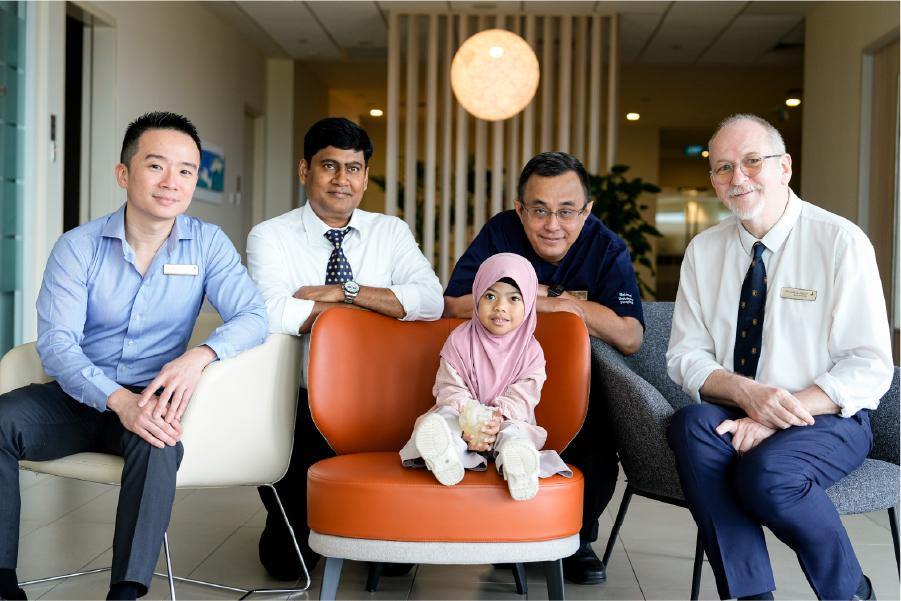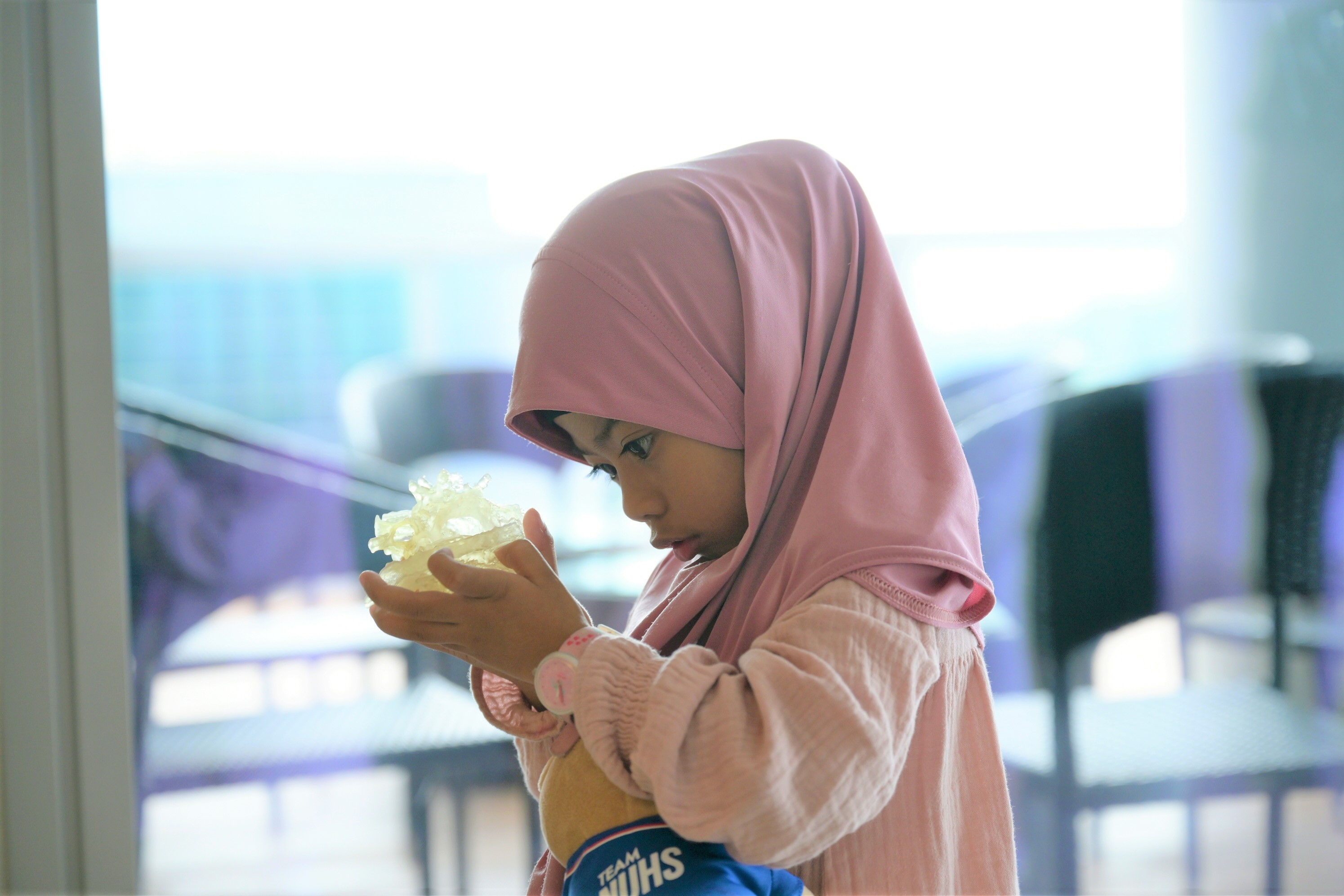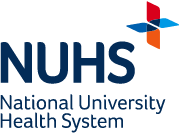Doctors from the National University Heart Centre, Singapore and
NUH’s National University Centre for Women and Children work together
to help young Nur Faathimah Assyifa’ overcome a rare and complex
congenital heart disease, giving her the chance to grow, play and thrive.
Issue 8 | March 2025

 Subscribe and ensure you don't miss the next issue!
Subscribe and ensure you don't miss the next issue!
When Nur Faathimah Assyifa’ was born at the National University Hospital (NUH) in 2020, her oxygen levels were dangerously low, and her body had turned blue — clear indicators that her heart was not functioning as it should.
Doctors at NUH quickly identified she had a rare congenital condition where her upper heart chambers and abdominal organs had formed on the opposite side of the body. She also had a large hole in the wall between the heart’s lower chambers and was missing a pulmonary artery, which is crucial for carrying blood to the lungs for oxygenation.
It was a complex and high-risk condition that entailed a collaborative effort across specialties. A multi-disciplinary team from the National University Heart Centre, Singapore (NUHCS) and NUH’s National University Centre for Women and Children took on the challenge. Thanks to their combined effort, Assyifa’, now four years old, is growing up as an energetic, playful girl.
Managing a complex cardiac condition
At just one month old, Assyifa’ underwent a shunt procedure to improve blood flow to her lungs. However, complications soon followed — she suffered a cardiac arrest, and further scans revealed that her aorta was compressing her windpipe, making it difficult for her to breathe. To stabilise her airway, doctors performed a tracheotomy by placing a tube in her windpipe to assist with breathing.
When she turned two, Associate Professor Laszlo Kiraly, Head & Senior Consultant, Paediatric Cardiac Surgery, Department of Cardiac, Thoracic and Vascular Surgery, NUHCS, led a team to perform a double switch operation, a procedure to correct the flow of blood through her heart. The surgery involved two steps: an atrial switch, which redirected blood flow between the heart’s upper chambers, and an arterial switch, which repositioned the great arteries to restore proper circulation.
As Assyifa’ was born without a pulmonary artery, the team used a conduit with a valve to reconstruct the missing pathway. The procedure, which lasted over 10 hours, demanded exceptional precision with no room for uncertainty. To prepare themselves, the team created a 3D-printed model of her heart using computed tomography (CT) scans, under the guidance of Assistant Professor Chen Ching Kit, Senior Consultant, Division of Paediatric Cardiology, Department of Paediatrics, Khoo Teck Puat – National University Children’s Medical Institute (KTP-NUCMI)1, NUH. This allowed the surgeons to map out every detail of the operation before stepping into the operating theatre.
Recovery, rehabilitation and a future ahead
Beyond surgical milestones, long-term rehabilitation played an important role. Due to her reliance on a tracheostomy tube, Assyifa’ had issues with eating and speaking. She underwent feeding and speech therapy to learn to speak, swallow and communicate effectively. Children with complex congenital heart conditions often face an increased risk of neurodevelopmental delays due to prolonged hospital stays. With her parents deeply involved in her care, taking her to occupational and play therapy diligently, Assyifa’ made steady progress in overcoming these developmental challenges.




















